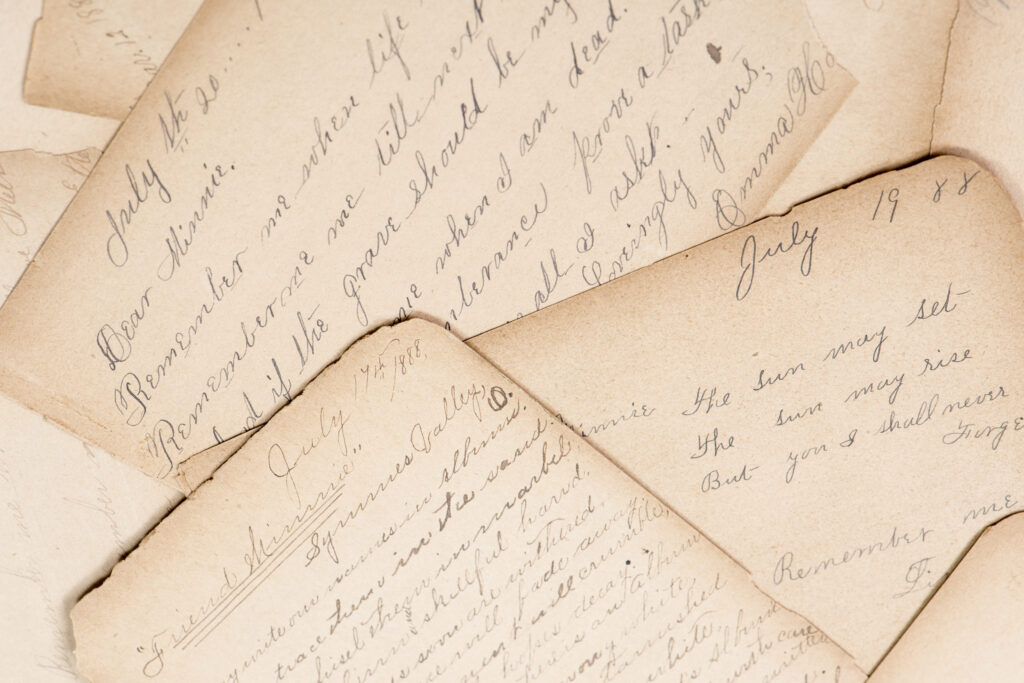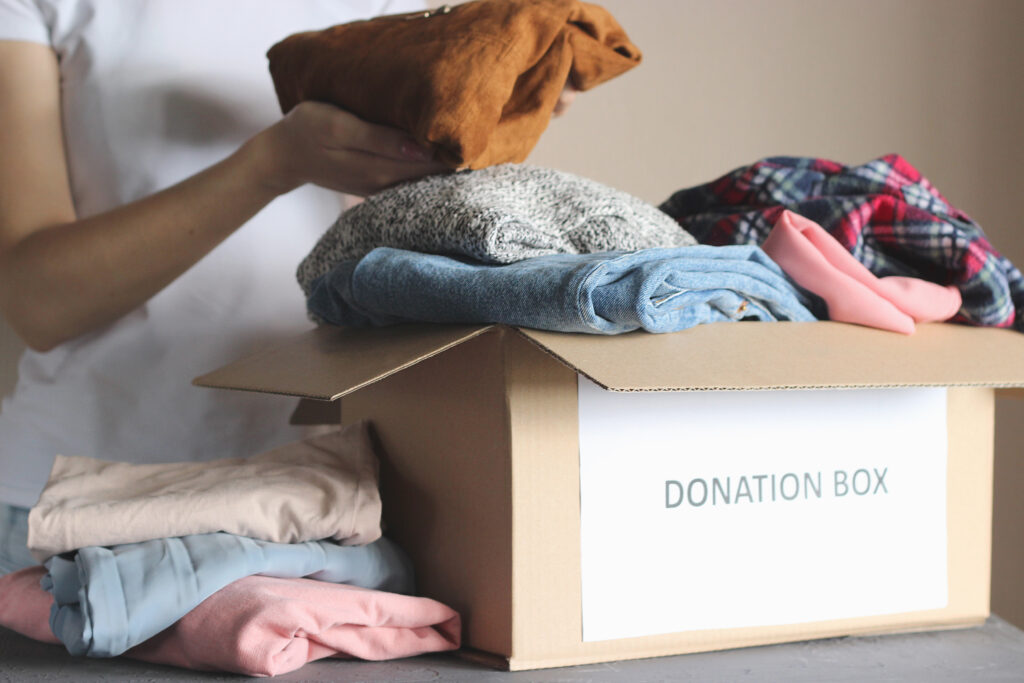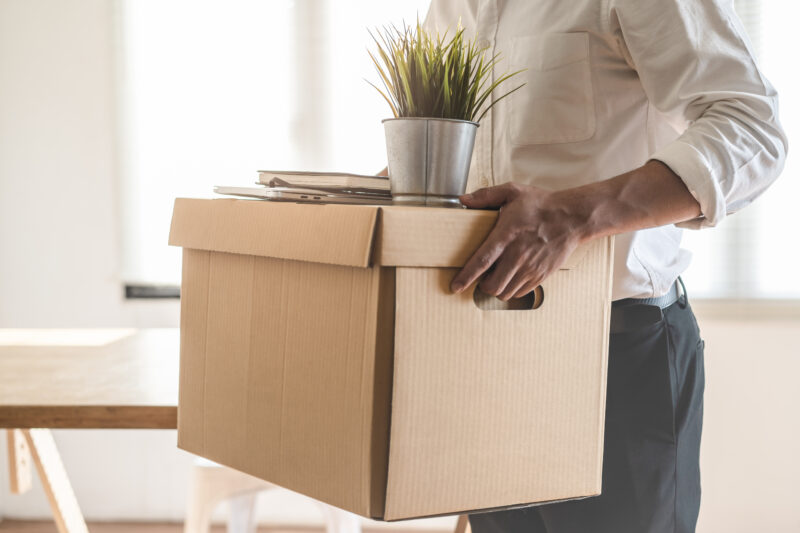Losing a loved one is never easy, and going through their belongings is a daunting and somber task. As a caregiver, you can offer support and guidance to your loved one when their mate dies.
Learn about the optimal timing for this task, as well as recommendations on what items to keep (and what to donate) and what to do when your loved one has items they’re not yet ready to part with.
When to start?
People often feel donating a loved one’s possessions means they’re losing a piece of them. Until your loved one accepts their partner is truly gone, leaving only cherished memories behind, they won’t be ready to sort through their things.
So, if there are no external pressures, such as needing to sell a house, it’s wise to wait until your loved one is far enough in their grief process to part with at least some of the items.

Sorting things out
Sorting mementos are a powerful way to process grief. Certain mementos are important for your loved one to share with their friends and family to keep their loved one’s legacy alive. However, helping them establish and express their own unique identity is an important step in the grief process.
The process is difficult for both loved one and caregiver. Sorting the mundane, everyday possessions of one’s deceased partner is difficult and likely to stir up memories and emotions, evoking feelings of grief and despair. Confusing questions also come up for you as a caregiver. For example, which legal documents are vital to keep, and where should you store them?
What to keep
As a rule of thumb, always keep financial and legal documents, but some documents don’t fall into those categories. Here are the ones you should keep:
- Password logs: Having access to your loved one’s accounts, records and digital documents is essential. For example, having access to their social media accounts can prevent hackers from exploiting the deceased.
- Passport and ID documents: Any identification documents like passports, driver’s license and military ID should be stored in the same place as the deceased partner’s death certificate.
- Tax forms: Keep tax forms and records for at least the past three years (the time frame during which the IRS can audit these records).
- Retirement paperwork: Annuity contracts, pension paperwork and anything else related to retirement are important to keep even if you are not going to be overseeing these continued payments or distributing assets.
Photos are among the most important keepsakes. Help your loved one sort through photos, and allow them to share any memories these photos bring about. Then, keep the photos that are important to your loved one in an easily accessible location, and put the rest away in a dry, waterproof and airtight container.
The decision to keep or donate antique furniture should be considered carefully, as many of these items are valuable and could potentially serve as heirlooms to later generations. These items should be appraised, and experts recommend doing so sooner than later.
Francine Proulx, president of Art/Antiques Information Resource in Fairfax, Virginia, told the Washington Post, ”Appraisers often are brought in too late, after items whose value was not recognized have been given away.”
She recommends choosing an experienced appraiser who belongs to one of the three most reputable major professional associations — the International Society of Appraisers, the American Society of Appraisers and the Appraisers Association of America.
Access to old journals and letters will help your loved one keep the memory of their mate alive; they can remember their spirit by taking this look into their past thoughts. Archive these journals and letters for safekeeping or, better yet, digitize them, if possible.
Artwork is a deeply personal thing, as their loved one may have created the piece(s), or they may have chosen the artwork together to display in their home. Be gentle with your loved one when sorting through these; items that seem to have no worth to you may have immense value to them.

What to let go
Encourage your loved one to let go of home decor that doesn’t reflect their individuality. If possible, store all decor that falls into this category into a dedicated place (closet, crawlspace, attic, etc.), but wait to donate it. Before making any final decisions, give your loved one a period of time to adjust to the change in their home. Then, further down the road, help them decide what they would like to replace the decor with, encouraging them to pick things they like, as opposed to choosing only what their mate would’ve preferred.
China and dishware are often another conundrum. Most young adults do not wish to have these passed on to them as heirlooms, and they’re difficult to sell. So, simply thin these items out to leave space, both figuratively and metaphorically speaking. Suggest keeping one place setting to display and donating the rest. Or, if the loved one enjoys crafts, you could recycle, upcycle or repurpose some of the pieces.
What to do with the items they can’t let go of just yet
Some items (e.g., clothes, photographs) may trigger too many memories and emotions, but they may be able to part with them in time. Establish an area of a house, perhaps a closet or storage space, that will serve as a way station for these items. As with decor, place these items out of sight, give your loved one time to adjust, and then check in with them at a later date. When they’re ready, help to box them up for donation.
Once you do identify the items to let go of, it’s helpful to label them according to three categories:
- Sell
- Donate
- Throw away
Some people use color-coded sticky notes for this process. Just be sure to organize them carefully.
Final suggestions and advice
Regardless of what you keep, it’s important to tackle the project in steps. Depending upon the level of grief your loved one is experiencing, it may be best to plan these steps for them. Use your best judgment as to whether to share this plan with your loved one; it may help them to see an orderly way through the process, but it could make them more resistant to the process, too.
Pace yourself. Don’t try to tackle the project all at once. Schedule enjoyable and relaxing breaks in between each task. If you do too much at once, your loved one may be too exhausted and traumatized, thus reluctant to continue. A lifetime of memories can’t be processed and packed in one day.
And finally, encourage your loved one to release their guilt about discarding or donating their loved one’s things. Remind them their memories are what matters; the “stuff” related to these memories will not change or take away memories of their loved one. It’s not their responsibility to keep these things forever, and their loved one wouldn’t want them to either.
Following the steps and advice above will help to help smooth the process for your loved one and bring them healthy closure by creating order and harmony during a stressful, heartbreaking time.

